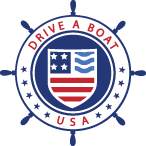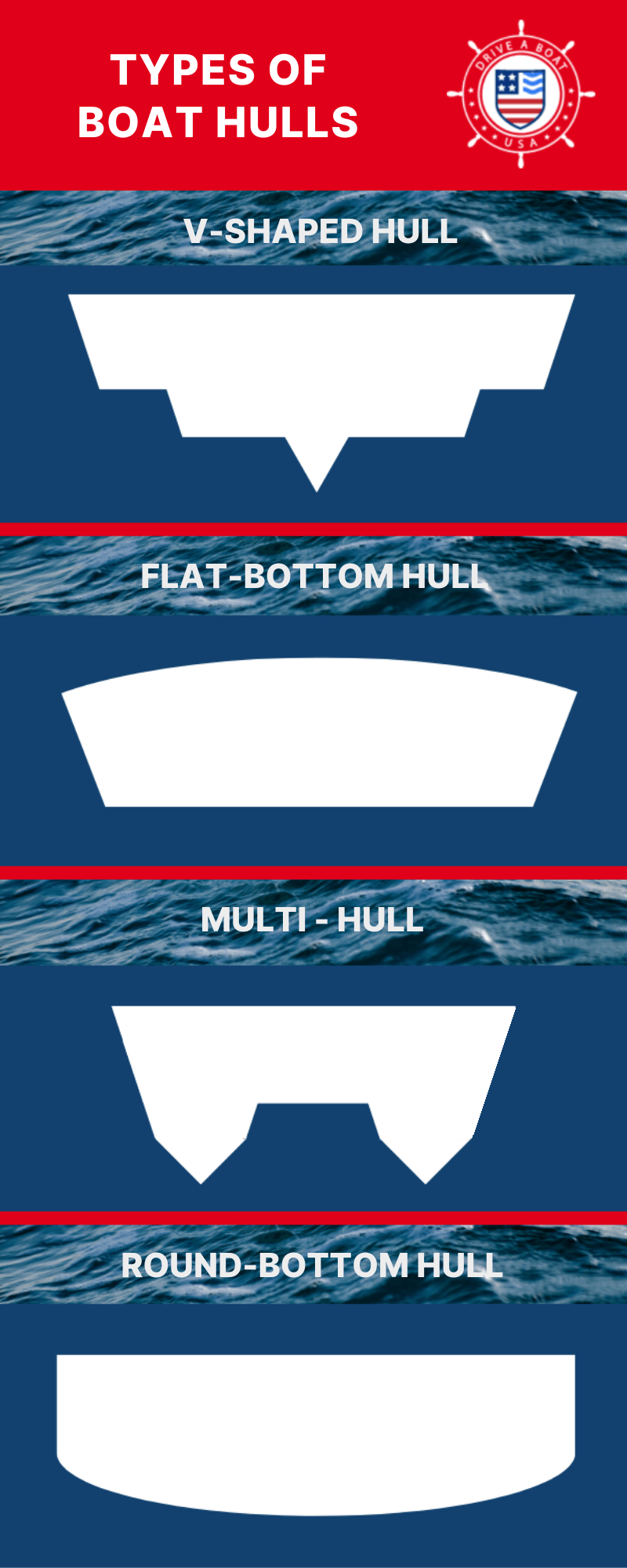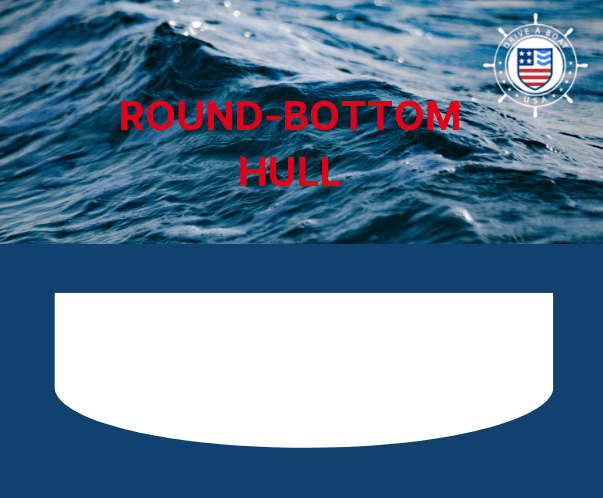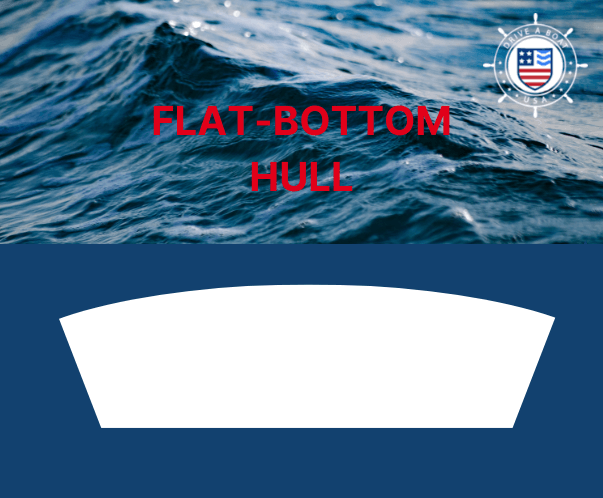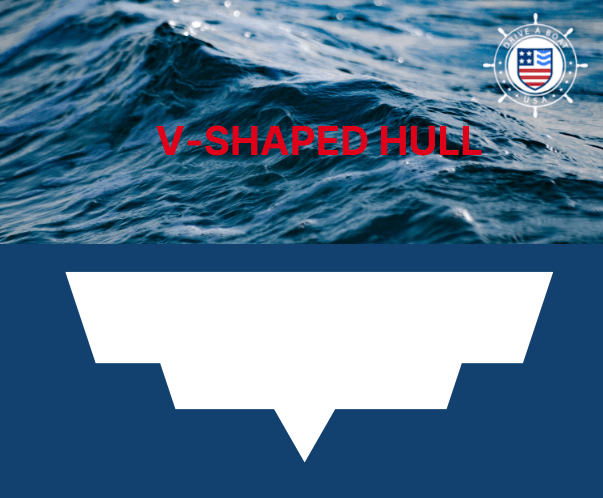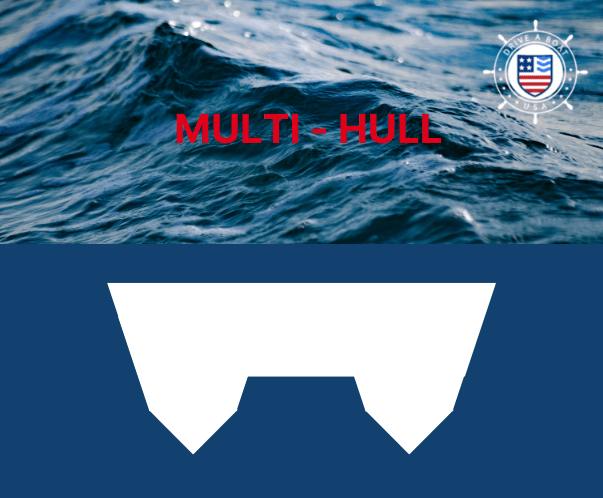Boat Hull Types and Shapes
The shape of the hull is a defining feature of any watercraft. Boat hulls do not only differ in appearance, their varying structural characteristics make them more or less suited to specific water activities. Different boat hull types have different functions.
Some hulls displace water as the boat travels, while others are designed to ride on top of the water’s surface, called “planing”. Within these two broad categories, there are numerous variations of boat hull shape.
What is a boat hull?
Let’s begin with a few basic definitions. The hull is the body of a boat. This term refers to the part of the boat structure that is watertight, with the deck considered a sort of roof to the hull structure. The line where the hull meets the water surface is called the waterline, and the angle (measured in degrees) of the hull relative to the water surface is called the deadrise. Boaters can measure deadrise at various points on a boat to assess how well the vessel will travel through the water.
Here are the main types of boat hulls, and the types of water travel they are best suited to.
Displacement Hulls
Displacement hulls are commonly found in large ships, trawlers, and traditional recreational sailboats. Although they may not be the fastest, these hulls offer stability and are capable of carrying substantial loads with smaller propulsion systems. The bottom of displacement hulls is typically rounded, with ballast positioned low in the center. When stationary, these rounded hulls tend to roll in response to waves and swells.
Displacement hulls are predominant in sailing boats, slow-moving vessels, and sizable watercraft such as cruise ships. Their combination of weight and power causes them to settle deeper into the water, displacing water rather than skimming across its surface.
Round-Bottom Hulls
Hulls with a round-bottomed design are usually a type of displacement hull, and they are designed to move effortlessly and seamlessly through the water. A canoe is a perfect example of a round-bottomed hull.
However, it’s important to note that this design feature comes with a trade-off in terms of stability, as round-bottomed hulls are prone to wobbling and capsizing. You have to be extra careful when embarking, disembarking, and loading these types of boats.
Planing Hulls
Powerboats and personal watercraft commonly feature planing hulls, which allow them to skim across the water’s surface at higher speeds. These hulls exhibit displacement hull characteristics at lower speeds but will transition into a planing state at around 15-16 MPH, depending on factors like design and weight. Planing hulls come in various shapes, each offering its own advantages and disadvantages.
Planing hulls are favored in smaller, faster watercraft. Their design facilitates rising up and gliding on the water’s surface when traveling at higher speeds.
Flat-Bottom Hulls
Boats equipped with flat-bottomed hulls offer exceptional stability and can accommodate heavier loads. These boats require minimal engine power to achieve planing, but they can be less comfortable when navigating through choppy waters or heavy weather conditions.
Flat hulls are commonly found in small aluminum or fiberglass bay and fishing boats, providing shallow drafts and ample deck space. These features make them well-suited for leisure activities like fishing in calm environments like small lakes, ponds, and slow-flowing rivers.
V-shaped, V-bottom or ‘Vee-shaped’ Hulls
Deep V-shaped hulls are designed to slice through waves effortlessly and provide a smooth ride even in choppy waters. However, they require a bit more power to get onto a plane, and during sharp turns, they have a tendency to roll or bank. The angle of the hull also means that these boats have limited interior volume for storing belongings or accommodating passengers. Fast, long-distance fishing boats, like center consoles, often feature V bottoms because they allow them to zip across open water and reach fishing spots quickly.
V-shaped Hulls are the most popular type of hull for powerboats and fiberglass motorboats. Typically, these boats are equipped with larger engines compared to flat or round-bottomed boats, enabling them to achieve impressive performance on the water.
Multi-Hulled Boats
Multi-hulled boats have separate and distinct hulls. These can be either planing or displacement hulls depending on the size of the boat and the engine. Catamarans, trimarans, pontoons boats and certain types of houseboats are multi-hull water vessels. Multi-hull boats include both sailboats and powerboats.
Multi-hull boats are among the most stable types of boat, but they require more room to steer and turn.
Learn more about boat hulls with Drive A Boat USA!
Boats with different shaped hulls are suited to different types of water activities. While planing hulls are best for travelling at high speeds, displacement hulls are better suited to larger boats or leisurely activities on calm water. Within these two broad categories, intrepid boaters can also choose from among flat-bottomed, round-bottomed, v-shaped and multi-hulled boats.
Choosing the right type of boat is important to boating safety. The right hull can also make a difference to your boating comfort. Even if you are just learning how to drive a boat, it is important to understand the structure of your vessel and be aware of its limitations and functionalities.
Contact us today if you have any questions about the official state-approved boating license and start enjoying your favourite boating activity in the right kind of boat!
